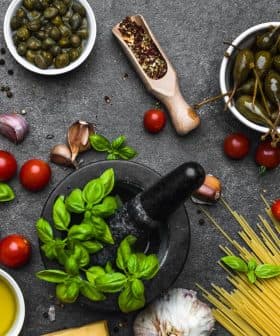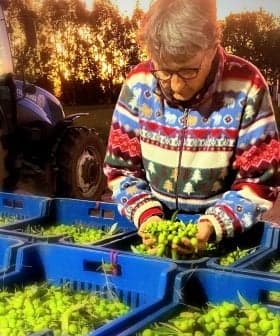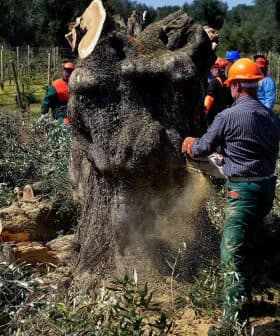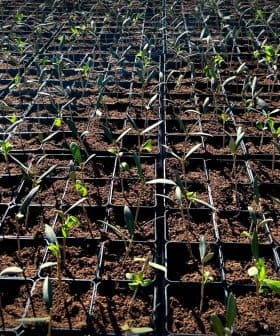Rediscovering Ancient Varieties to Meet Today's Challenges
Recovered ancient olive cultivars seem to provide a good answer to today's challenges such as those posed by climate change, extreme temperatures and pests.
The global olive oil industry is seeing a rise in the use of diverse olive varieties, with a focus on both sensorial and manufacturing improvement. Research into new cultivars, including ancient and forgotten varieties, is ongoing to address challenges such as climate change, with some varieties showing resistance to environmental stresses and diseases. The recovery of these unique olive varieties is leading to the production of high-quality extra virgin olive oils with distinct flavors and characteristics.
The number of olive varieties used to produce high-quality extra virgin olive oils continues to grow at a global level. Figures from the NYIOOC World Olive Oil Competition show a greater diversity of cultivars received awards at this year’s edition than in any previous year.
Employed individually or mixed into blends, each type has distinguishing chemical and organoleptic characteristics, which may vary to some degree based on factors such as production area and cultivation techniques. Growers have understood the potentials of these factors and started to explore olive biodiversity in order to achieve both sensorial and manufacturing improvement.
DNA analysis will give us further, reliable information about this plant, which deals very well with frosts, winds and drought.
Up until a few decades ago — when all of the farmers’ efforts were concentrated on producing as much olive oil as possible in order to ensure their families’ and communities’ self-sufficiency, regardless of quality — many types of olives were set aside because of their low yield. Often trees bearing small drupes difficult to pick were replaced by others which were more productive and easier to harvest; it was a question of production choices.
In recent years, research into new cultivars has occurred in parallel with an intense promotion of minor and little-known varieties, and the recovery of ancient and forgotten ones, which in some cases have not yet been officially classified.
See Also:Olive Oil Health BenefitsThe olive oil world is experiencing a rediscovery of newfound, but actually ancient varieties, which in several cases, seem to provide solutions to today’s challenges, such as those posed by climate change, including extreme temperatures and outbreaks of pests.
Genetic variability, and in particular the ability of species to resist environmental stresses, is actually a major area of study: research is ongoing and projects in this field have been launched by the European Union’s Horizon 2020 plan.
Among the most recently rediscovered, the variety Minuta di Chiusi is widespread in a small area of the Val di Chiana (Siena) between Chiusi and Cetona, in Tuscany. According to research, it has an ancient bond with the territory, having been grown in Etruscan times. From its small fruits (minuta means “tiny” in Italian) local farmers extracted an extra virgin olive oil with green notes of wild herbs, almond and thistle, marked by a high content in polyphenols.
“It was probably put aside by local farmers due to its very low yield and high detachment force of fruits,” Luca Mencaglia, an experienced technician who has collaborated in its recovery, explained. Taking these factors into account, producers should consider its good response to extreme temperatures. According to reports, it emerged unscathed from severe frosts in 1929 and 1956, and survived through the especially cold 1985 winter.
Mencaglia pointed out that these plants are also largely unaffected by the olive fruit fly and has a great resistance to diseases such as the olive knot, (caused by the bacterium Pseudomonas savastanoi).
“Notwithstanding yield and harvest costs, the Minuta di Chiusi is a strong plant that gives a very good product,” Mencaglia said.
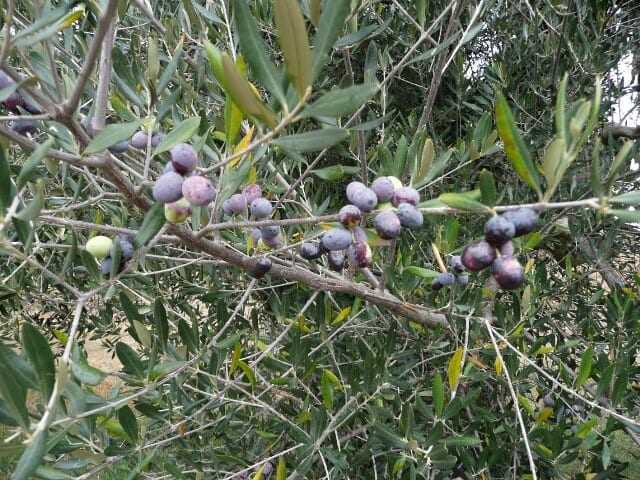
In Sicily, at La Goccia d’Oro cooperative in Menfi, production is focused on Nocellara, Biancolilla and Cerasuola.
“However, for some years we have been experimenting also with other traditional cultivars of this area,” chief operation officer Accursio Alagna said. “In particular, we have looked at Pidicuddara, which has practically been discarded over the last decades because the harvest is particularly complex.”
He suggests that due to high fruit detachment force, many have probably preferred to cultivate other types of olive trees that were easier to manage.
“Our current production lines give us great satisfaction, however, since we are constantly looking for improvement, we decided to experiment with this regained variety,” he said. “About 400 plants are scattered throughout the territory of our cooperative, and we realized that they are particularly resistant to various pathogenic attacks, which in recent years have become more frequent.”
They collected Pidicuddara fruits with the help of harvest tools, between late October and early November, and obtained an excellent extra virgin olive oil, rich in polyphenols.
“We will therefore soon organize this production in a more structured way,” Alagna said.
At the other end of Sicily, Salvatore Mocciaro manages about 3,000 plants of Nocellara Messinese, Nocellara del Belice, Santagatese, and Verdello at Villa Colonna farm, in the heart of the Nebrodi regional natural park.
“The latter two are very interesting,” Mocciaro said. “My Santagatese monovarietal has a light-medium fruity, with almond and herbs on the nose and in the mouth, characterized by harmonic bitter and spicy sensations. Verdello is a minor variety, which in recent years, has been revalued by several producers of the area with great results, thanks to its medium fruity of green almond, thistle, and freshly cut grass, which gives pleasant persistent sensations.”
Mocciaro explained that its small, firm drupe resisted the warm humid weather of April, May and June very well. “We had no trouble with late flowering and pollination,” he said. “Moreover, I observed a limited alternation in production, which means that we can count on constant production.”
In Basilicata, Luciano Pepe and Andrea Lago are waiting for the DNA results on some olives harvested at Fontana dei Santi, in the territory of Albano di Lucania.
“Our groves are located between 400 and 700 meters (1,300 and 2,300 feet), and we have been exposed to freezing winds in winter and intense heat in summer, especially in recent years,” Pepe said. “Then, in addition to Ogliarola del Bradano, Racioppa and Coratina, we started to test autochthonous varieties, which have been overlooked over the last decades but proved to be resistant to extreme weather conditions.”
They, in fact, observed that some plants passed unharmed through particularly severe seasons.
“Three years ago, in winter, we reached 15 degrees below zero (5 degrees Fahrenheit), and in summer we suffered a record drought with temperatures up to 45 degrees Celsius (113 degrees Fahrenheit),” Lago explained. “Then, in spring, these plants also withstood a sudden rise in temperature and, despite late flowering, we have not observed any significant falling.”
The two producers specified that Fasola is the common name used by the local elders for this olive tree that gives medium-large double-aptitude (it can be used for olive oil and table olives) fruits.
“DNA analysis will give us further, reliable information about this plant, which deals very well with frosts, winds and drought,” Pepe added.
Plants of Casaliva, widespread in the banks of Lake Garda, are flanked by Miniol, Negrel, and Gargnan at La Zadruga, managed by Sergio Cozzaglio, which discovered a new variety a few years ago.
“We momentarily called it Villa Romana since the first plants were found near the remains of a Roman Villa, and it is now waiting for an official denomination,” he said.
From about 100 olive trees, these groves have produced a very good extra virgin olive oil, medium fruity with hints of almond, artichoke, grass and high polyphenolic content.
“It has all the potential to be developed,” Cozzaglio said. “According to the analysis carried out by the National Research Council’s Institute of Biosciences and Bioresources of Perugia, its DNA is not yet known, as it is a unique variety.”
Cozzaglio added that the newfound Villa Romana has a constant production and withstands low and high temperatures. It has an average resistance to anthracnose and olive knot, and with the exception of the peacock eye, it stands up well to all the other diseases.



